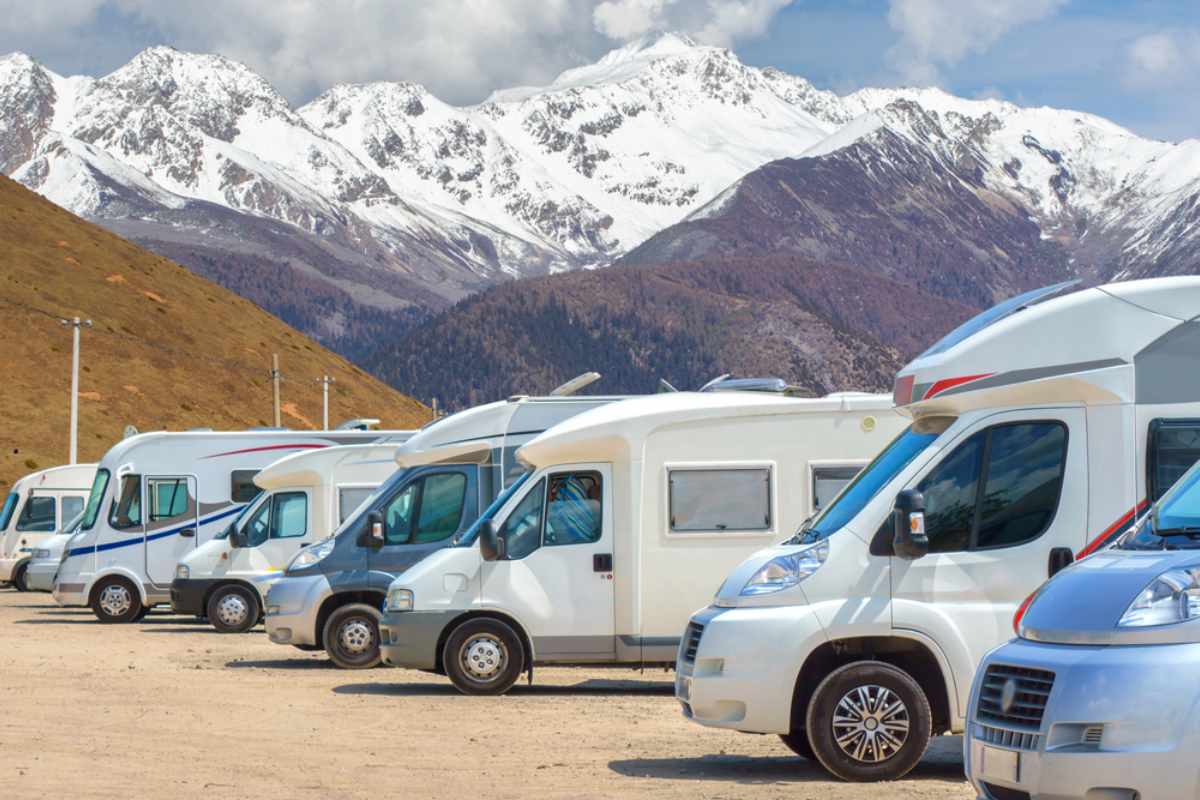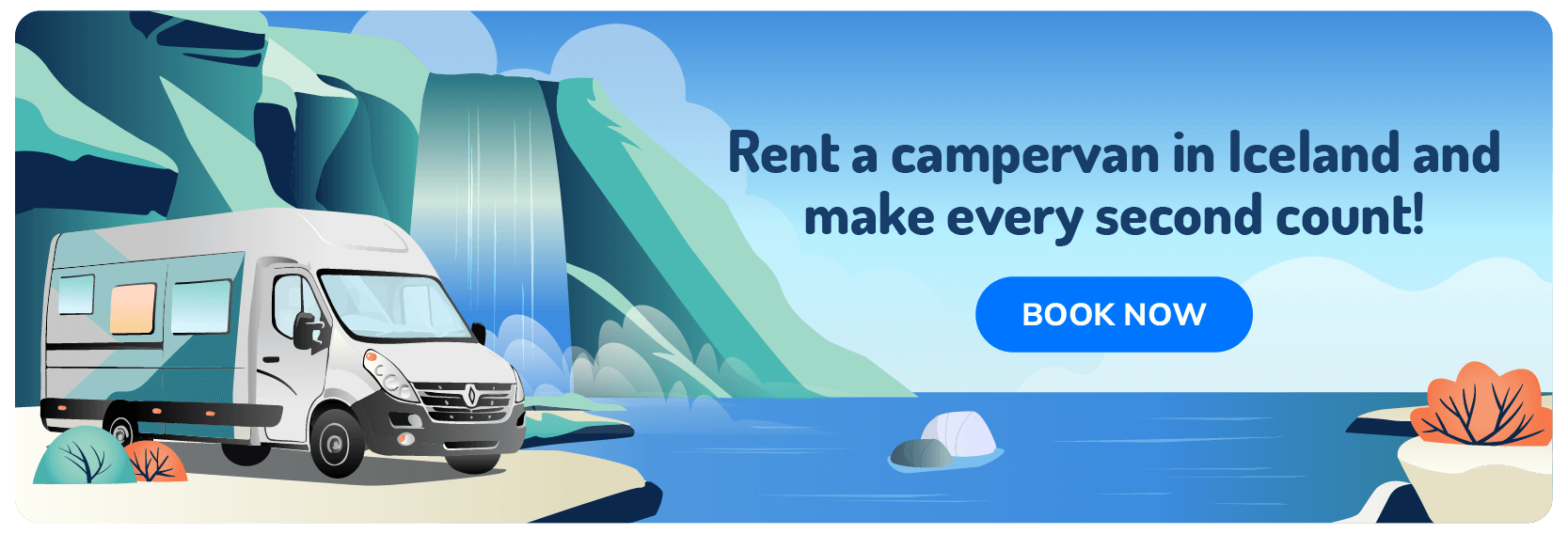The Land of Fire and Ice, with all its incredible natural wonders and breathtaking landscapes, is the perfect place to explore by road-tripping around in a campervan. But since rules and regulations vary between countries, this begs the question: where to park a campervan in Iceland?
This guide will give you all the answers, from the legalities to a few helpful tips and advice on traveling in a sustainable way when renting a campervan in Iceland and where to find some of our prime campervan spots. So, without further ado, let’s get you out on the road!
Understanding Parking Rules for Campervans in Iceland
There are a few things you need to know when it comes to the law and a few other general regulations and guidelines here in Iceland:
The Legal Guidelines for Campervan Parking
It’s definitely not just us thinking Iceland is the ideal location for a campervan adventure. We actually started having a lot of issues due to the increase in visitors and the increase in campervan rentals. The country wasn’t as prepared as it should’ve been for the influx of campervan adventurers, and many campervan explorers also weren’t very mindful or considerate of locals and Icelandic nature.
So, certain laws were established in 2015 to try and combat the new surge of explorers. According to the new laws, no campervan is allowed to park overnight where it is not a designated camping spot or where you don’t have the explicit permission of the landowner. This also means no overnight parking in designated parking spots in our cities and towns.
Any parking without signs specifying that it's campervan parking should not be seen or used as camping parking, and if it doesn’t explicitly say that you can overnight/camp there, you shouldn't. Most city/town/attraction parking will be short-term and often require payment via our local parking apps.
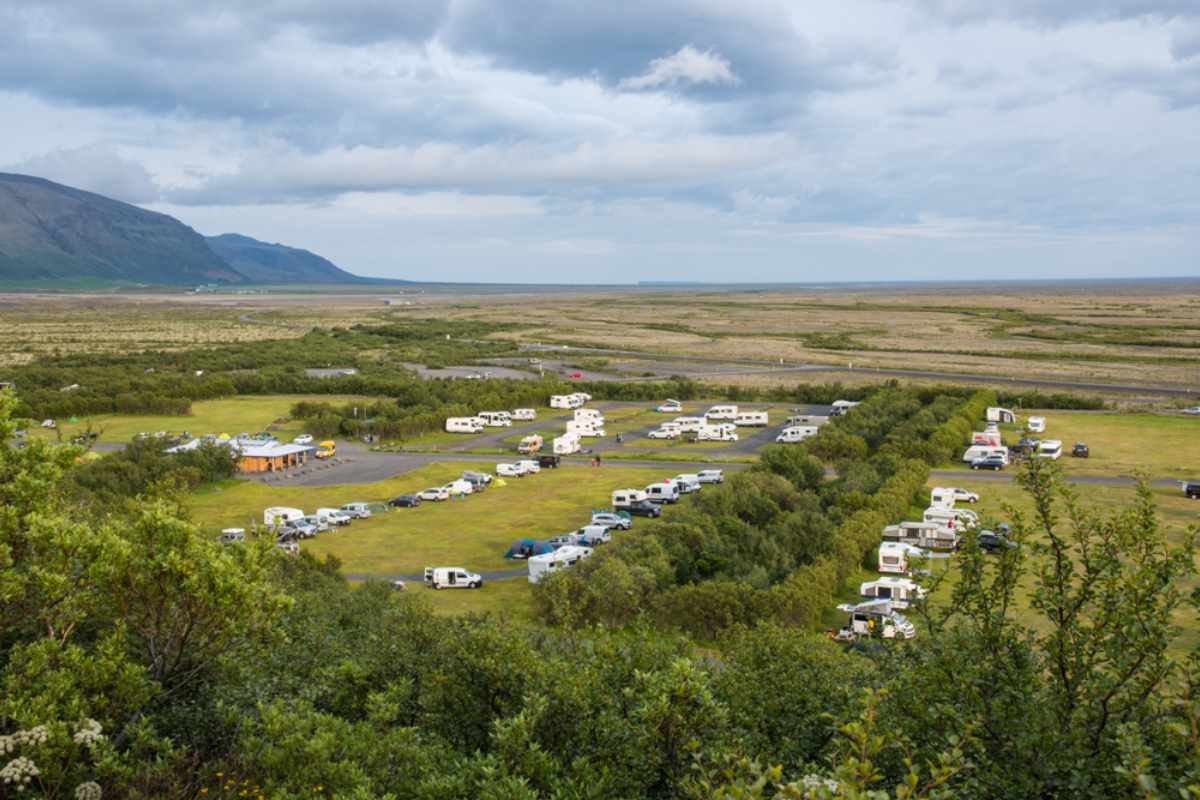
The Difference Between Urban & Rural Campervan Parking
Be sure you stick to the following in the different areas:
Urban Areas (Cities, Towns, Villages, etc.)
Only park and camp in designated campgrounds if you’d like to overnight somewhere. We actually have many campsites in the middle of our cities and towns, or so close that it’s within walking distance.
When parking for any other reason, ensure that it is a designated parking spot, and ensure that you abide by time restrictions and pay any applicable parking fees. Also, ensure that the spot is not for residents only. Otherwise, you might have an angry local breathing down your back!
Rural Areas (Countryside, Mountain Passes, Roads, etc.)
You are only allowed to park and camp in a designated campground or on land where the landowner has given you specific permission to do so.
For any other short-term parking, you’re also only allowed to park in designated parking spots (whether picnic spots, attraction parking lots, etc). You are not allowed to make any “quick stops” along the road. If caught, you will be subject to a fine.
Best Practices for Responsible Campervan Parking
If you’d like to be part of the solution and not the problem when road-tripping with a camper or motorhome rental in Iceland, the following is important and will ensure you have a safe and memorable trip:
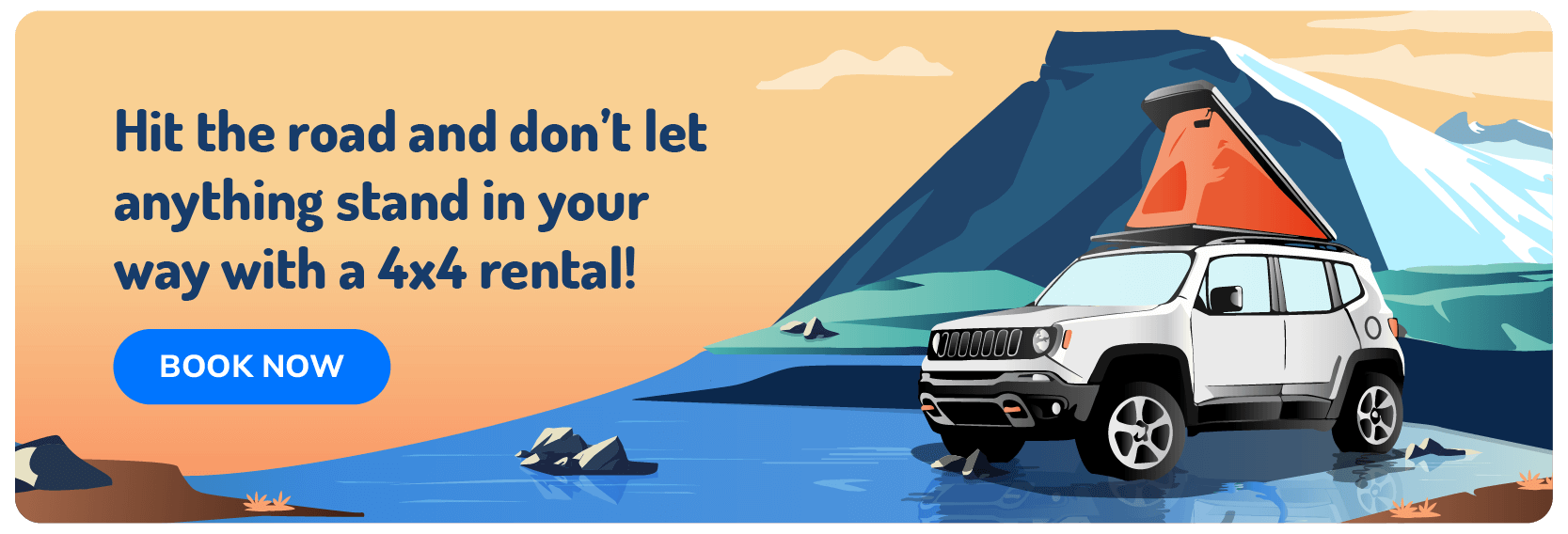
Leave-No-Trace: Protect Iceland’s Environment
Always follow a leave-no-trace principle when traveling around the country. This means staying on dedicated paths and trails as well as parking and camping in designated spots so you don’t accidentally disturb the environment and its fauna and flora. For example, we have a rare moss that grows here on the island that, if damaged, can take up to a decade to recover, if it all!
Also, ensure that you clean up after yourself. Don’t litter and throw rubbish into the bin. If there’s no bin, take your trash with you and discard it later. Plan out bathroom breaks if you’ve opted for a camper without a toilet, whether it’s going to the ablutions before heading out or scouting out your nearest gas stations. You don’t want to end up in an illegal parking situation where an emergency bathroom break has you leaving toilet paper behind.
Using Portable Toilets and Waste Management Tips
If you’ve opted for a camper with a toilet, there can be a few ways of dealing with it, but both require designated waste disposal sites. Some campers may have intricate bathroom facilities almost resembling plumbing solutions in a modern-day home, but most will use a type of portable toilet, which, ironically, isn’t generally transported anywhere when it comes to waste management.
Both toilets essentially rely on a sort of holding tank where chemicals are used to dissolve and purify the matter before you have to dump it out at a designated dumpsite (most campsites will have these). But your rental agent will show you exactly how all this works if it’s your first time campervanning. This raw sewage type of toilet waste is referred to as black water.
What many don’t think about is what is referred to as grey water. This is water such as your dishwater or shower water, which also runs into a wastewater holding tank similar to that used for the black water. This water also has to be disposed of regularly at disposal sites. While we touched on the chemicals used in the waste management system, we recommend that you dive into some biodegradable options that have less of an impact on the environment.
Essential Apps and Websites to Find Legal Parking Spots
The easiest way to avoid any ambiguity around designated parking spots and to make paying for parking simple is to download two essential apps here in Iceland: Parka and EasyPark. To find campsites for much-needed breaks, overnight stays, and waste removal, you can use Tjalda.is or use this helpful Google map of campsites in Iceland.
Some of the Best Campervan Parking Locations in Iceland
If you’re unsure of where to begin planning your overnight stays with your camper, the following can help:
A Few Ring Road Parking Spots
The Ring Road is one of our most popular campervan road trip routes. It goes around the island and allows visitors to get a taste of most regions here in Iceland. The following are some of the prime parking locations found here:
South Iceland
Eastfjords
West Iceland
- Snaefellsnes Peninsula Campsites, such as:
- Stykkisholmur Campsite
- Snorrastadir Campsite
- Grundarfjordur Campsite
A Few Scenic Mentions
The following campsites are known for their incredible views and close proximity to some of our natural wonders:
- Skaftafell Campground (near Jokulsarlon Glacier Lagoon)
- Camping at Landmannalaugar (near some of our famous natural hot springs, such as the Secret Lagoon)
A Couple Parking Tips from Locals
Remember that even though you are not allowed to park next to the road, there are quite a few picnic/rest spots found along rural roads. Just keep an eye out for the blue signs with a little picnic table on them.
We have quite a few farmstays in Iceland. These are very exceptional, known for their breathtaking views of the Icelandic landscape and a way to get close to our animals such as the Icelandic Horses. Many of these farm stays are advertised as a guesthouse or self-catering cottages, but some of these landowners often grant permission for campervans to overnight there as well for a small fee. So, it’s always worth a shot to give them a call.
A Few Common Mistakes to Avoid When Parking a Campervan
The following are a few, often unintentional mistakes, that can get you into a lot of hot water here in Iceland (and not our good kind):
- Assuming that there’s no one. You will find many places in Iceland, especially in the more remote regions, where landscapes stretch out for miles and miles with no houses or people to be seen. That’s often when people just assume that there’s no one and it’s okay to take a chance and park their camper. But private land is vast here on the island, and you are almost guaranteed to be caught, whether by local law enforcement, a neighbor, or the landowner himself/herself.
- Not keeping an eye out for signage. Sometimes, people are not paying attention and miss the no-parking sign or signs stating that they’re in a protected area. Whatever the sign is – “I didn’t see it” is not a good legal defense.
- Parking in restricted parking. We completely understand that it can be tricky navigating around in a country where you don’t speak the language, and even the alphabet is probably not what you’re used to. But you will have to double-check that parking spot before just stopping. It could be reserved for residents, for a specific business, or even a specific sight or attraction.
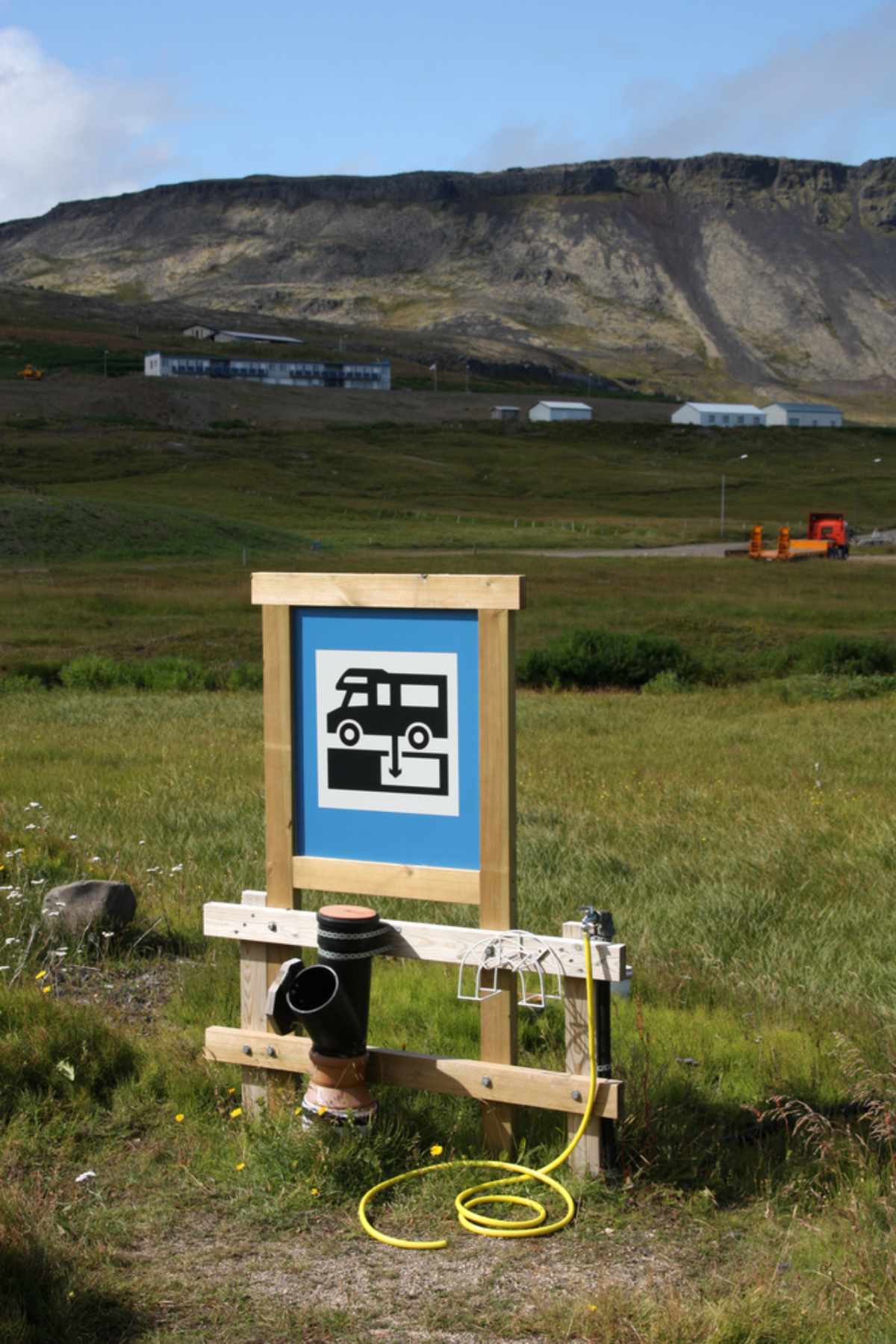
Preparing for Your Campervan Adventure
The following advice could come in handy for overnight parking or camping:
What to Pack for Overnight Parking in Iceland
We think everyone is capable of packing for a holiday. These are just a few essentials you may not think of when visiting Iceland:
- Clothes you can wear in layers. Iceland is notorious for the quick-changing weather, so when you wear layered clothes, you’ll always be able to put something on or take something off, depending on the situation.
- Cooking gear and appliances if you don’t have a camper with a kitchen or may just feel like cooking outdoors.
- A raincoat. Many think this is because of potential rainy weather, but you’ll be so glad you’ve got it when you visit our waterfalls and all that mist and spray start blowing your way.
- A “summer” kit. Many forget to pack swimwear, a swim towel, sunscreen, and sunglasses since these are such “beach” weather items that no one expects to really need them in Iceland. But you can still get a nasty burn even on an overcast day. And the glare from the water, ice, and snow will give you a migraine from all the squinting. You also definitely don’t want to be the only one not able to enjoy the hot spring water.
- A first-aid kit. Whenever you’re hitting the road or going camping, a first aid kit can really make a difference if something happens.
- Flashlight or Headlamp. We prefer the latter since it allows your hands to be free.
- Always have a few extra rations of food and water on hand, especially when traveling in the more remote areas. Also, ensure that you don’t buy a lot of fresh produce when on a campervan road trip since they’re likely to go off quickly. Things like canned food, nuts, and health bars are a good option to keep for emergencies.
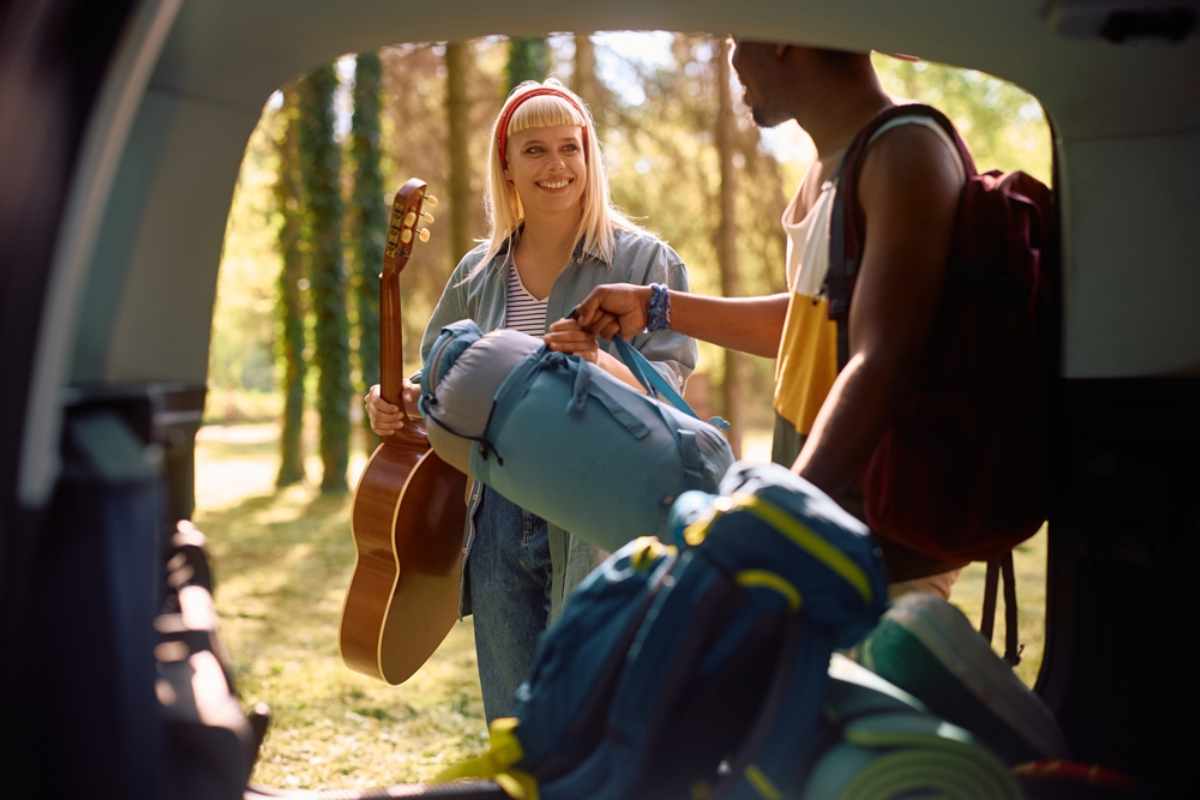
Planning Your Campervan Road Trip Itinerary
There are a few crucial things to remember when compiling your trip itinerary:
- Keep track of your driving time and how much time you’ll be spending at an activity or an attraction. It may seem plausible to visit 3 waterfalls a day, but not when each is a 2-3 hour drive away from the other. You also can’t have 5 stops if one is an activity that will take 6 hours. Unless you plan on taking serious advantage of Midnight Sun hours, it’ll be absolutely impossible.
- Always check on the amenities and facilities of the places you’re planning on staying over. If you know you’ll need to work while traveling, WiFi will be essential. You’ll need to ensure the site has dump stations to accommodate campervan waste. Check the ablution facilities. Find out whether there’s a shop on-site or nearby or whether you need to stock up beforehand.
- Plan out where you’ll be fueling up. This is incredibly important here in Iceland, especially if you’re traveling on a tight budget. Gas does not cost the same everywhere, and in the remote regions where gas stations become pretty few and far between, fueling up can start costing a pretty penny. To ensure you get the most bang for your buck, you’ll need to do some research on where to fuel up at the cheapest rates. Also, pinpoint gas stations in the more remote regions, so you’re not left stranded next to the road.

Frequently Asked Questions About Campervan Parking in Iceland
Below, you will find the answers to some of the most frequently asked questions regarding campervan parking in Iceland:
Is Wild Camping Allowed in Iceland?
No, wild camping is not allowed in Iceland, unless you’re planning on staying overnight on someone’s private property and have their explicit permission to do so.
Can I Park Overnight Near Waterfalls and Beaches?
You can park overnight near waterfalls and beaches in a designated camping spot in a designated camping ground. Some of these campsites are really just a stone’s throw away from these attractions.
How Do I Handle Waste Disposal While Parked?
Essentially your campervan will be handling the waste while you’re parked. Black and grey water will be collected in holding tanks and trash will be placed in bins. The water and trash then need to be discarded regularly at designated dumpsites.
Have a Safe and Memorable Trip by Knowing Where to Park a Campervan in Iceland
Everyone traveling to the island wants to leave here with lifelong memories. Just make sure those memories don’t include angry locals, damage to the ecosystem you’re responsible for, or a fine so hefty you might remortgage the house back home.
By adhering to Iceland’s regulations and prioritizing sustainability, campervan travelers can enjoy the country’s natural wonders responsibly and have the adventure of a lifetime here in the Land of Fire and Ice. So, use all our helpful tips and advice in this guide to plan and prep the ultimate trip itinerary, come rent a camper in Iceland and hit the road!
